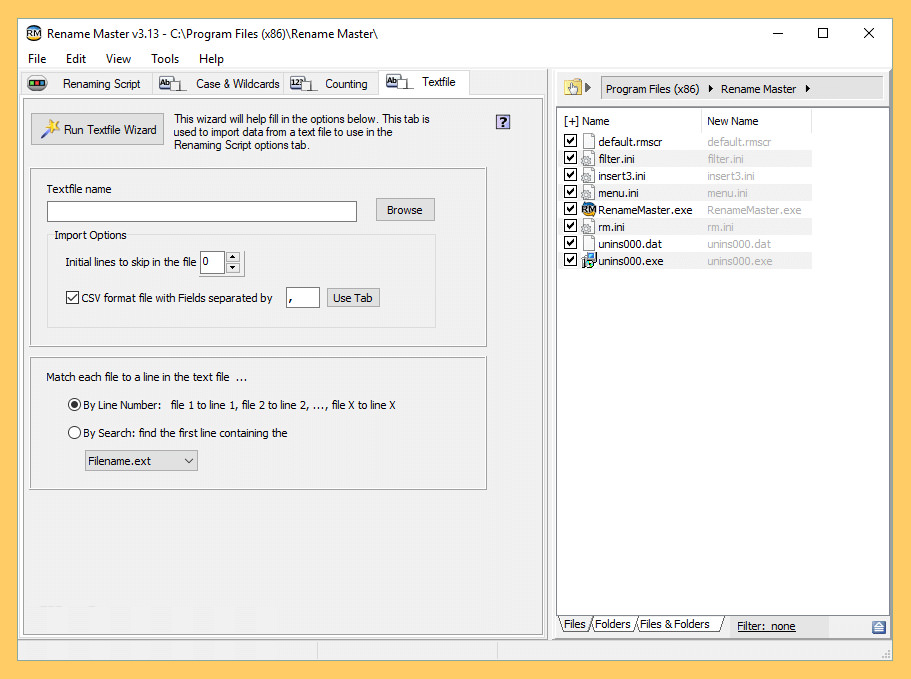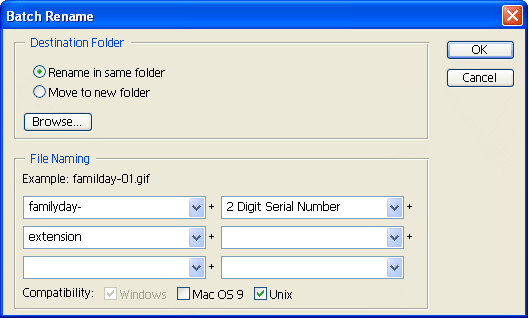

But if there is more then two the last has to be a target directory.

Now: the mv command can and do work on multiple files. Mkdir: cannot create directory ‘file2.txt’: File exists Mkdir: cannot create directory ‘file1.txt’: File exists

The expansion can further be viewed if you do for example: $ ls By quoting you prevent the wildcards from being expanded if there should be any matches. Now: using commands like some_command *.tsv when the intention is to actually keep the wildcard one should always quote it. $ mv *1.txt *.tsvĪs *.tsv now is a directory, the files ends up being moved there. That is: the file is renamed to *.tsv with the asterisk and all. As it does not the file file1.txt is moved to *.tsv. Now, again, mv check to see if *.tsv exists. The mv command is executed with: argc = 3 Now if you instead say: $ mv *1.txt *.tsv (Typically move all the files into one.) Nor create directories on a whim.Īs a result it aborts and reports the error: mv: target ‘*.tsv’ is not a directory As it is not, the program can not continue as it is not designed to concatenate files. The mv program check to see if last argument, *.tsv, is a directory. In the above example that would be: argc = 4

As there are no *.tsv files that is not changed. Now what happens on the mv line is that the shell expands *.txt to the matching files. Loads of examples is perhaps best way, so here we go: Example 1: $ ls If no matches are found the unexpanded version is passed.Īgain: the shell expands the patterns, not the program. The list of files are passed to the program, here mv. The shell, lets assume bash, expands the wildcards if there are any matching files (including directories). When you issue the command: mv *.txt *.tsv 1 root root 0 Jan 26 11:40 test4.gappedPeak 1 root root 0 Jan 26 11:40 test3.gappedPeak 1 root root 0 Jan 26 11:40 test2.gappedPeak 1 root root 0 Jan 26 11:40 test1.gappedPeak name "*.gappedPeak" -exec sh -c 'mv "$1" "$ is replaced by each ( *.gappedPeak) filename foundīy the find command, and becomes $1 to the sh command. This should work on any POSIX-compliant system: find. Then, translate those actions into your scripting solution of choice, depending on which is most appropriate.I know this doesn't answer your question, but in case you were looking for another way to rename the files compared to your work-around loop, why not use find? I have used this command many times to replace file extensions in large directories with hundreds of thousands of files in it. bat file and find out what it actually does. What you need to do next is to decipher that. And if for whatever reason, you want to delve even deeper into scripting, there you can do shell scripting. The easiest of which is Automator, which is built right into OS X (look in your Applications folder). That said, there are many different ways to script automated solutions with OS X. And just as you can't change the name of the English instructions mentioned above and have it understandable in Chinese, you can't simply change the extension on the. OS X, being based on UNIX, has no idea what to do with a. That's what you're looking at here.bat files are MS-DOS batch files. Now, someone hands you directions for that task and they are written in. Let's further assume that you need to do a task that consists of several steps, each with very specific instructions. Let's assume you're Chinese and don't speak a lick of English.


 0 kommentar(er)
0 kommentar(er)
